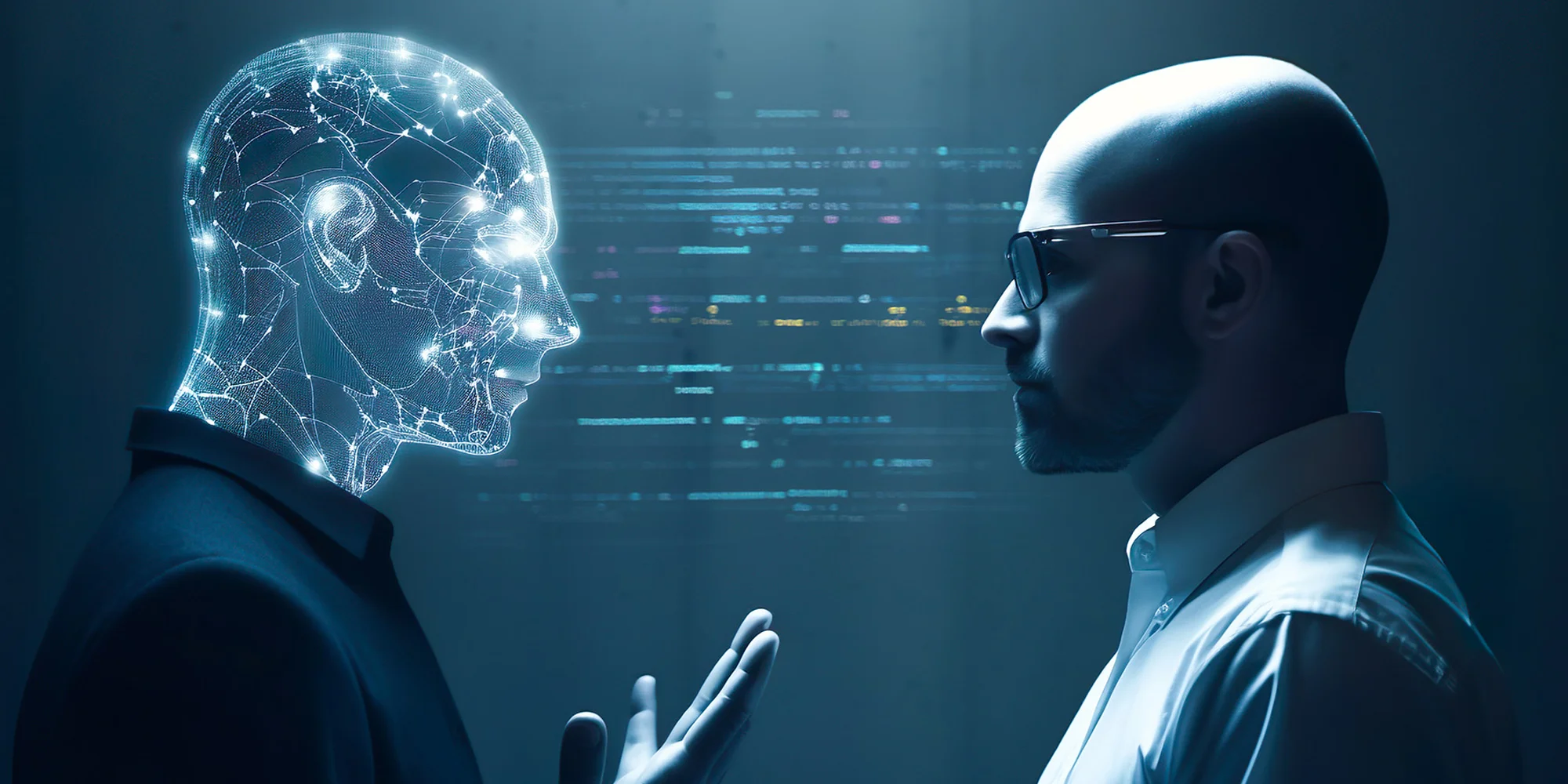
In this article
7 Types of Artificial Intelligence and How they Work?
In this article
Introduction
Today, machines are evolving faster than human capabilities. This is because the world of technology especially in the types of Artificial Intelligence (AI), and the industry is eager to see more of it.
While people might think that AI is an old concept, however, it is important to note that AI is in fact not.
The very term Artificial Intelligence was defined by John McCarthy, in 1956. He defined it as:
‘The science and engineering of making intelligent machines.’
And, now what we see is merely a result of a great evolution which was powered by industrialization. While we still are in the very early phase of AI, its various applications based on various types are all around us.
AI has completely revolutionized the 21st century and is a part of our everyday life. Hence, it becomes important that we understand its different types and categories.
So, let’s dive deeper into the world of Artificial Intelligence and its various types.
Understanding of Artificial Intelligence
If I ask you about Artificial Intelligence, what comes to your mind?
Is it something like robots taking over the world?
Or, something that you might have seen in a sci-fi movie?
Don’t worry that happens to all of us!
Even, I thought of it the first time I started learning about it.
But, when I dove deeper into how AI, I realized that AI is nothing like that, and yet so much more.
What Is Artificial Intelligence?
In simple, machines with the ability to perform cognitive functions such as learning, perceiving, problem-solving, and reasoning are deemed to hold artificial intelligence.
AI exists when a machine has the cognitive ability and its benchmark is the human level speech, vision, and concerning reasoning.

What Are the Different Types of AI?
We have 4 types of AI:
- Reactive Machines
- Limited Memory
- Theory of Mind
- Self-aware
We classify AI mainly in terms of technology. Here are the three types of AI-based on this classification:
- Artificial Narrow Intelligence (ANI)
- Artificial General Intelligence (AGI)
- Artificial Super Intelligence (ASI)
Types of Artificial Intelligence Along With Their Functionalities in Detail
1. Reactive Machines
We can say that Reactive Machines kick-started the field of AI. It is literary the oldest one of the four types and laid the foundation for ‘Conditional Intelligence’.
Reactive Machines deals with a simple set of behaviours that runs according to the environment. They cannot form inferences to evaluate their future actions from the data.
In simple, it is a complex network of nested if-else cases and it does not learn from the experiences. It simply reacts as per the settings provided.
An example of Reactive AI is the famous IBM Chess program, Deep Blue that beat Garry Kasparov. Another example of reactive machines is Google’s AlphaGo.
2. Limited Memory
Limited memory machines are purely reactive machines with combined capabilities of learning from historical data for decisions making.
In simple terms, limited memory has a small memory that they can use to make observations and judge a situation based on that, before giving a response.
Today, these are one of the most stable and frequently seen types of AI. Almost all existing applications come under this category.
As I stated earlier, the one and only capability which distinguishes it from reactive machines are its ability to learn.

Algorithms use previous knowledge to understand a situation and an appropriate reaction to it.
Similar to all present-day AI systems, such as those using deep learning, they are trained by huge volumes of data that are store in their memory to form a reference model for problem-solving.
For example, to teach image recognition AI name objects it scans, it is trained using thousands of pictures with their labels. Hence, while scanning an image, it uses the training images as references to understand the contents of the image. With time, it labels new images with increasing accuracy based on its learning experience.
The most common real-life example of this type of AI ranges from chatbots and virtual assistants to self-driving vehicles.
3. Theory of Mind
The previous two types of AI that we saw are found in abundance, but the next two types are either a concept or a work in progress.
According to many researchers, the Theory of Mind is going to be the next big breakthrough.
Why?
Theory of mind will have the ability to understand and have a perspective, similar to a human being. Not just that, but it will also have the ability to express emotions as well.
The theory of mind is the next level of AI systems that are being researched currently. If it ever came into existence, it will be closest to human behavior.
This AI will be able to better understand the entities it is interacting with by discerning their thought processes, needs, beliefs, and emotions.
To achieve Theory of mind, there needs to be developed in other branches of AI as well. For instance, a budding industry for leading AI researchers, artificial emotional intelligence.
This is because to understand human needs, AI machines will have to perceive humans as individuals whose minds can be shaped by multiple factors.
4. Self Aware
Self Aware is the state of AI that most technocrats are afraid of. But, currently, it is completely hypothetically.
Self-aware AI, which is quite self-explanatory, is an AI that evolved to be so akin to the human brain and develops self-awareness.
In simple, Self Aware AI system will have full access and understanding of its own. This type of AI will be an exact replica of human intelligence.

This type of Ai is centuries away from materializing and will always be the ultimate objective of all AI research. But, if we successfully build this AI system, it would have its own needs and even beliefs.
For instance, it might possibly have likes and dislikes and human-like qualities, like stubbornness.
This is the type of AI you may have seen in sci-fi movies.
As it has its own needs, beliefs, emotions, and potential desires, this is the type of AI that doomsayers of the technology are wary of.
While the development of self-awareness can boost our progress by leaps and bounds, but it can also be potentially catastrophic.
This is because self-aware AI is capable of having ideas such as self-preservation which may directly or indirectly spell the end for humanity.
Now, let’s understand the types based on capability.
5. Artificial Narrow Intelligence (ANI)
ANI is the most frequently experienced type of AI as almost everything you see in the field of AI comes under narrow AI. It is also known as weak AI because it operates under a limited set of constraints.
In simple terms, it refers to AI systems that can only perform a specific task using capabilities similar to humans. These machines cannot do anything more than what they are programmed to do. Thus, they have a very limited or narrow range of competencies.
Hence, it is the simplest one out of the three types of Artificial Intelligence.
Their main focus is on one or at most, two tasks. For example, object detection which recognizes a particular object in a given frame.
According to the aforementioned system of classification, they correspond to all the reactive and limited memory machines. It even includes the most complex AI that uses machine learning and deep learning.
6. Artificial General Intelligence (AGI)
AGI is the ability of an AI system to automatically perceive, understand, learn, and function like a human.
This type of AI is more of a theoretical concept, but soon they will be able to independently build multiple competencies and form connections. They will massively cut downtime needed for training and will make AI systems just as capable as humans.
They mainly deal with the Theory of Mind as they would have the ability to understand and even express emotions. But, self-awareness is one point that is yet to be clarified for AGI.
7. Artificial Super Intelligence (ASI)
ASI systems are going to be the zenith of AI excellence because if they are made a reality, it would be the last invention of the human race.
This is because the ASI systems are going to be better than human intelligence. They will not only replicate the multi-faceted intelligence of human beings but will be exceedingly better at everything. This will all be attributed to their memory, faster data processing and analysis, and decision-making capabilities.
They will be the strongest one out of the 3 types of Artificial Intelligence (AI), based on capability in every aspect of emotions, research, or even a reaction to catastrophes.
And, while having such powerful machines at our disposal seems appealing, they may also threaten our existence.
We are almost at the end of the blog and I know the question you must be asking yourself.
If these systems are not possible they why should we even keep a type for it?
Well, to be frank, we do not know what the future holds, and even though now we do not see it coming, we need to understand where we need to stop.
Recognizing these systems can at least help us start a better discussion on topics such as the ethics of AI and ways to control what we are developing.
Conclusion:
In this blog post, we have discussed different types of Artificial Intelligence or AI based on their functionality and capability. We also discussed the differences between the types of AI which will give us more clarity on the flow of development.
Lastly, we understood where we stand and what we are aiming for in the future.
And I want to conclude by saying that while we are surrounded by smarter machines, there are decades before we make the theoretical concepts full-fledged system.
Tech Insights Digest
Sign up to receive our newsletter featuring the latest tech trends, in-depth articles, and exclusive insights. Stay ahead of the curve!



